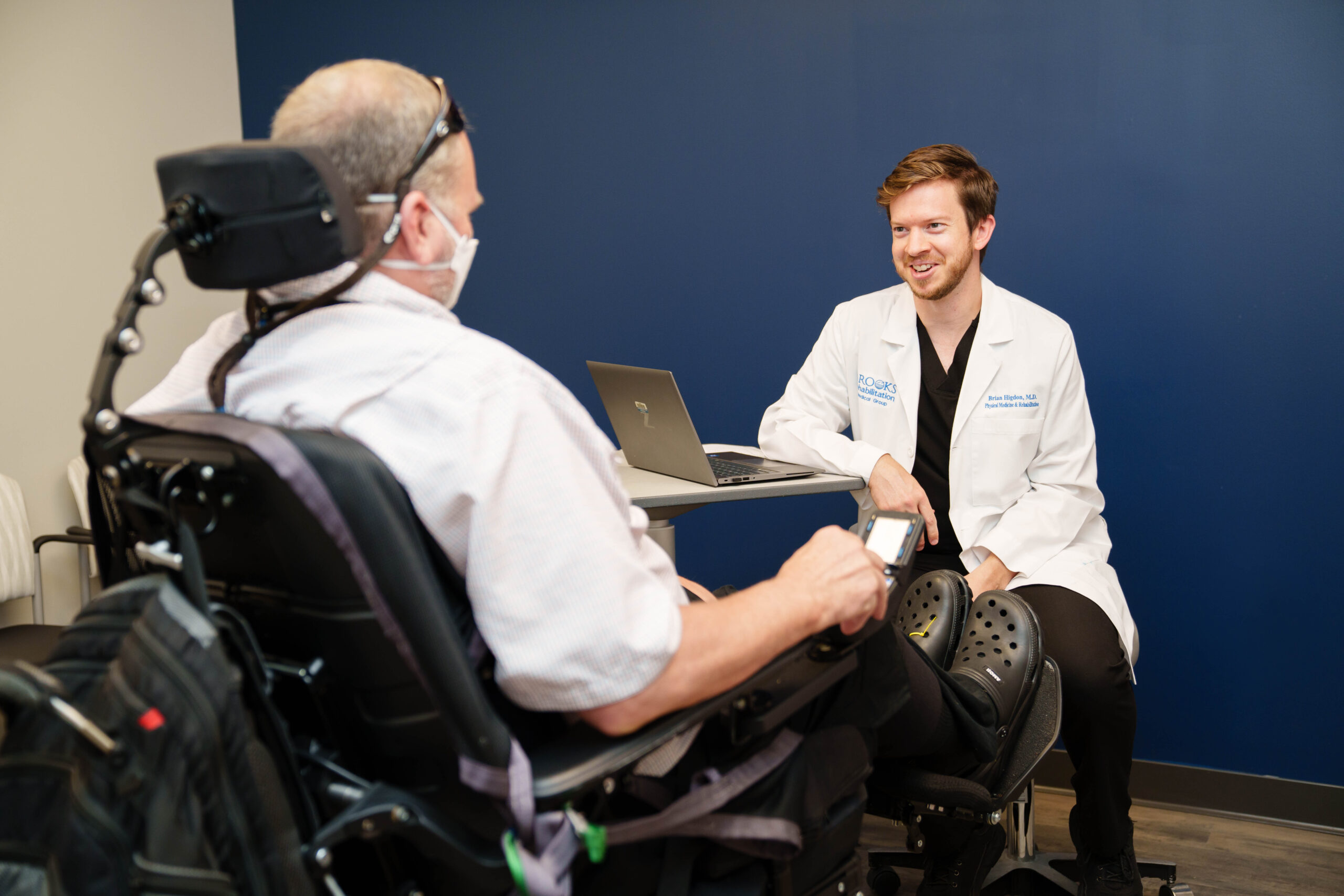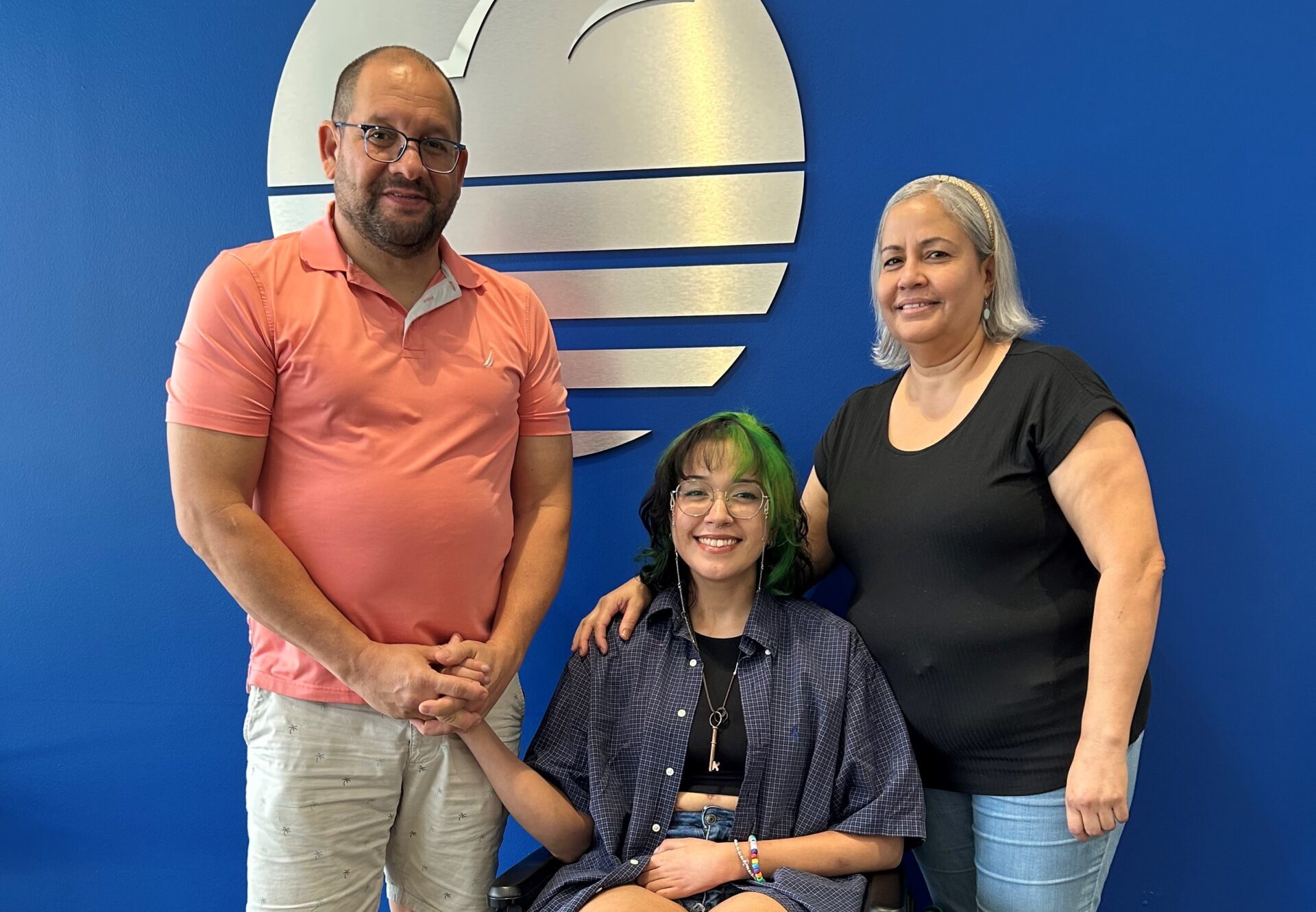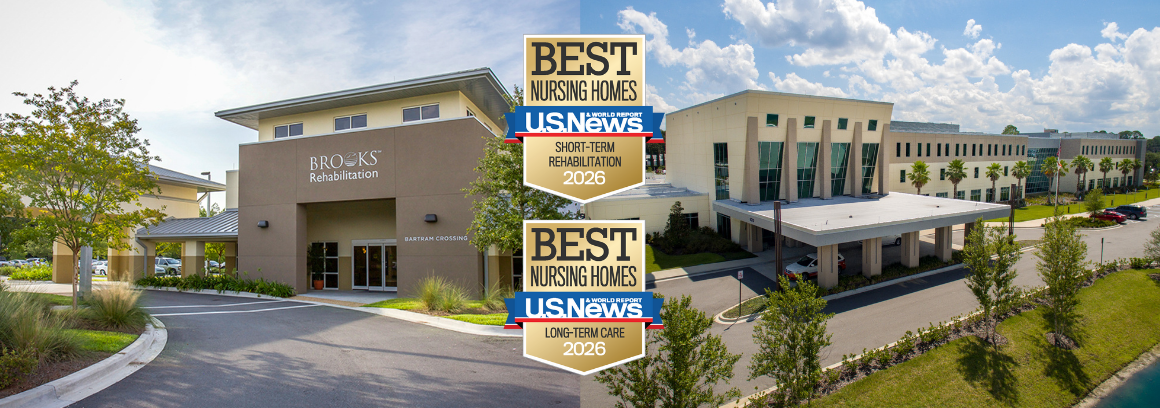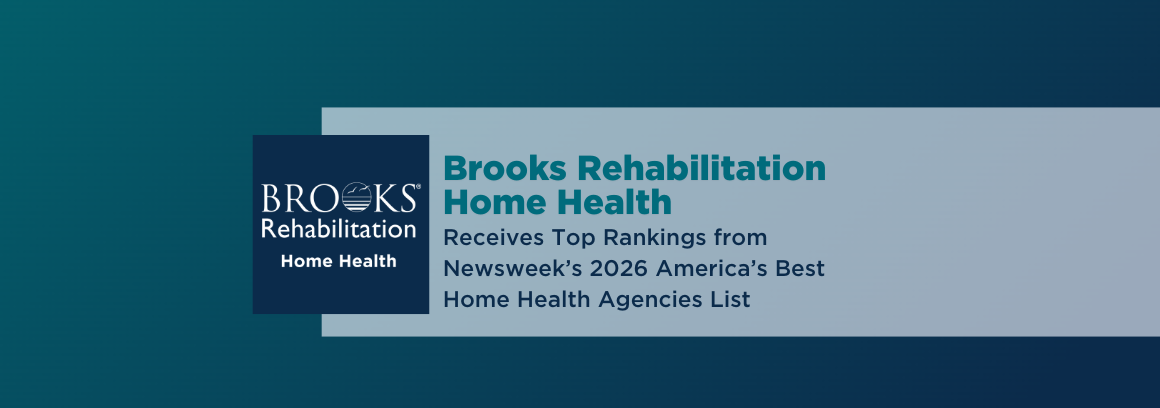Condition Overview
A spinal cord injury happens when there’s damage to the spinal cord or bones and tissue that protect it. Since the spinal cord carries signals between your brain and body, an injury can affect movement, sensation and other functions.
The injury’s effect on your well-being and abilities depends on the type of spinal cord injury and how serious it is. At Brooks, respected spinal cord injury rehabilitation specialists help you understand what’s possible and support you in working toward meaningful progress.
Types of Spinal Cord Injuries
There are two types of spinal cord injury:
- Incomplete spinal cord injury: Some movement or sensation is possible below the damaged area. The amount of function depends on the location and severity of the injury.
- Complete spinal cord injury: Total loss of movement and sensation. This can result in paraplegia affecting the legs and lower body or quadriplegia (also called tetraplegia) impacting the arms, legs and torso, as well.
Spinal Cord Injury Levels
A spinal cord injury is classified by where the damage occurred along the spine. Different parts of the spinal cord control different body functions, so the injury level affects how the body is impacted.
- Cervical spinal cord injuries occur in your neck and just above the shoulders.
- Thoracic spinal cord injuries affect the upper and mid-back.
- Lumbar spinal cord injuries take place in the lower back.
- Sacral spinal cord injuries impact the area near your tailbone.
Why Choose Brooks Rehabilitation for Spinal Cord Injury?
Brooks treats more people with spinal cord injuries than any other rehabilitation provider in Florida. Board-certified physical medicine and rehabilitation physicians with advanced training in spinal cord injury medicine guide your care. They work with additional specialists to deliver highly personalized therapies. Explore our spinal cord injury rehabilitation program.
Highlights of our program include:
- Care at every stage: From intensive inpatient rehabilitation to outpatient therapy and day programs, Brooks offers a complete range of services. Our teams work together across settings to support your recovery. At each step, you’ll work with people who understand your story and are focused on helping you continue to progress.
- Advanced support for walking: We understand how meaningful it can be to regain movement after a spinal cord injury. You have access to technologies like robotic-assisted walking devices and body-weight-supported treadmills. These devices help you get more movement out of each session, giving you the best possible chances to reach your goals.
- Specialty services: Spinal cord injuries can affect more than just movement. We provide advanced treatment and management for unusual muscle stiffness (spasticity), bladder and bowel issues and other concerns. Our services help reduce complications and help you live as independently as possible.
FAQs About Spinal Cord Injury
Can I walk again after rehabilitation for a spinal cord injury?
Some people regain the ability to walk, especially if the injury is incomplete. Recovery depends on things like the level and severity of the injury. At Brooks, you have access to advanced options, including technology-supported therapy, that aren’t widely available.
How is spasticity treated after a spinal cord injury?
Spasticity is a common effect of spinal cord injury and can cause muscles to feel unusually tight. It can make movement more difficult and sometimes uncomfortable. Brooks is home to specialists with deep experience in managing spasticity for people with spinal cord injuries. Our spasticity treatments improve comfort, mobility and quality of life.
How does spinal cord injury affect bowel and bladder control?
After a spinal cord injury, it can be difficult to know when you need to go or to empty your bladder or bowels completely. But you don’t have to manage these changes on your own. Brooks Rehabilitation offers therapies and support to help you regain more independence. Read more about bladder and bowel management.
Request Care
Find out more about becoming a patient and learn more about spinal cord injury rehabilitation.Latest News and Health Resources
Education and guidance to support your recovery
From Immobility to Possibility: Izzy’s Determination to Reclaim Her Creative Life Following Transverse Myelitis
Last Christmas was supposed to be a time of joy and celebration for Isabel “Izzy” Quezada. Instead, what began as a common case of influenza A would challenge everything she...




